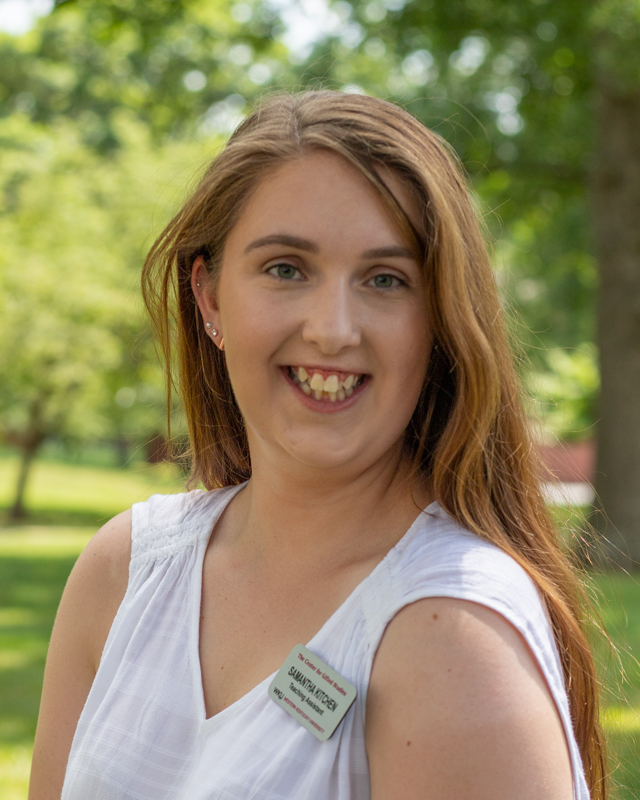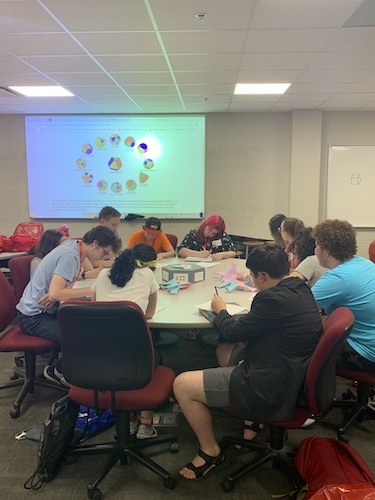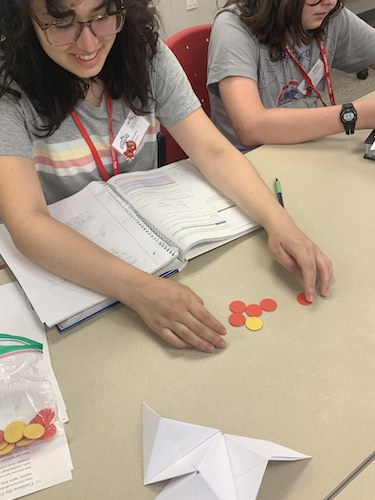by Samantha Caldwell (Kitchen)
I have noticed — in my own experience and while observing VAMPY students this week — that gifted students hate to struggle. They absolutely hate it. As a mathematician and a future educator, however, I aim to have students struggle. This statement may sound harsh, but let me explain.
The Mathematics class at VAMPY is set up differently from most camp classes. We have 11 amazing students who are each at different points in their mathematic careers, ranging from algebra 1 to differential equations. Due to this range, students participate in individual study in the morning and group activities in the afternoon. One duty of my TA position has been to find challenging problems that all students, no matter their mathematics experience, can work on collaboratively after lunch. Most students in our class are used to a black-and-white mathematics: an answer is right or it is wrong, and there is only one way to get to that answer. However, with advanced problem solving, most often two different students can and will have two completely different answers and still both be correct as long as they can explain themselves. This is not something our VAMPY students enjoyed in the beginning.
We began our problem-solving adventure with three problems: The Lonesome 8, 12 Matches, and The Penny Slide. The students were particularly interested in The Lonesome 8 problem when I told them that I had written a mathematical analysis of it in a college course. Students grouped themselves in groups of 3-4 and began to tackle the problems. Within the first minute of working, I heard: “This is impossible,” “There is no formula to solve this,” and “I hate struggling.” However, productive struggle allows students to remain focused as well as look for other alternatives or different strategies to use. It also helps students work collaboratively and listen to the opinions and ideas of their classmates.
Thinking outside the box of black-and-white mathematics took a while for the students to grasp. They often complicated things by trying to measure angles or adding more unknown variables, all of which were not necessary. For me it is important that the VAMPY students not only learn their specific branch of math throughout this camp, but gain experience in thinking abstractly, which they can use in different disciplines. The students spent two hours solving the three problems and were persistent the entire time, determined to find the answer for each one. At the end, they were successful, and I have never witnessed a prouder group of students.
In the past few days, the students have continued problem-solving within a new field: geometry. Through origami, the students have learned about platonic, Archimedean, and Johnson solids and how to construct these with paper folding. This was another hurdle for students as they began to struggle with following abstract instructions. Once again, our focused students eventually succeeded, completing one three-dimensional shape after another. Not only did they construct the shapes, but they found the surface area and volume formula for each. Be sure to ask any of our mathematicians what a tetrahedron or a truncated dodecahedron is!




